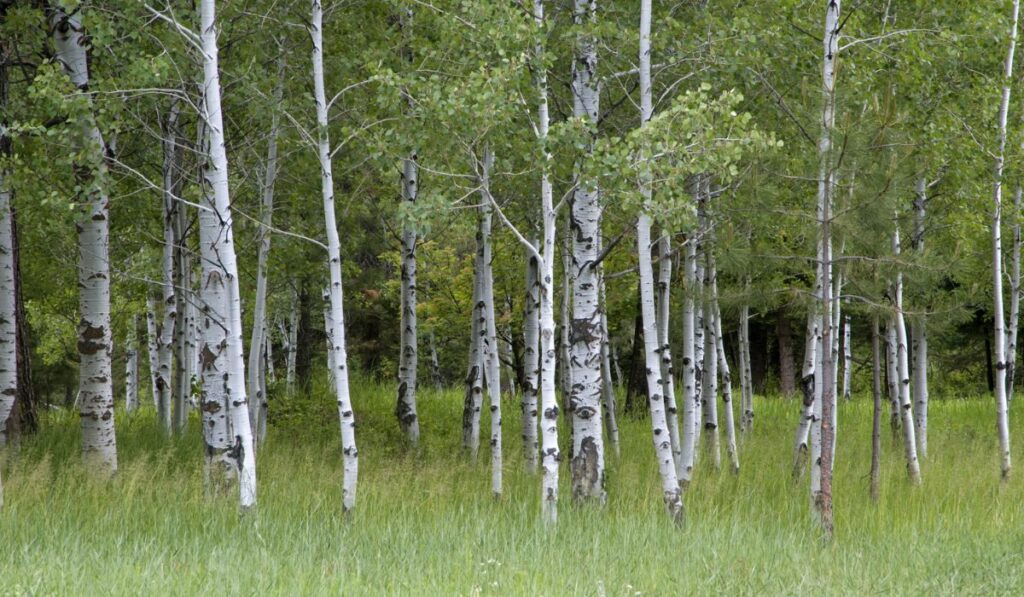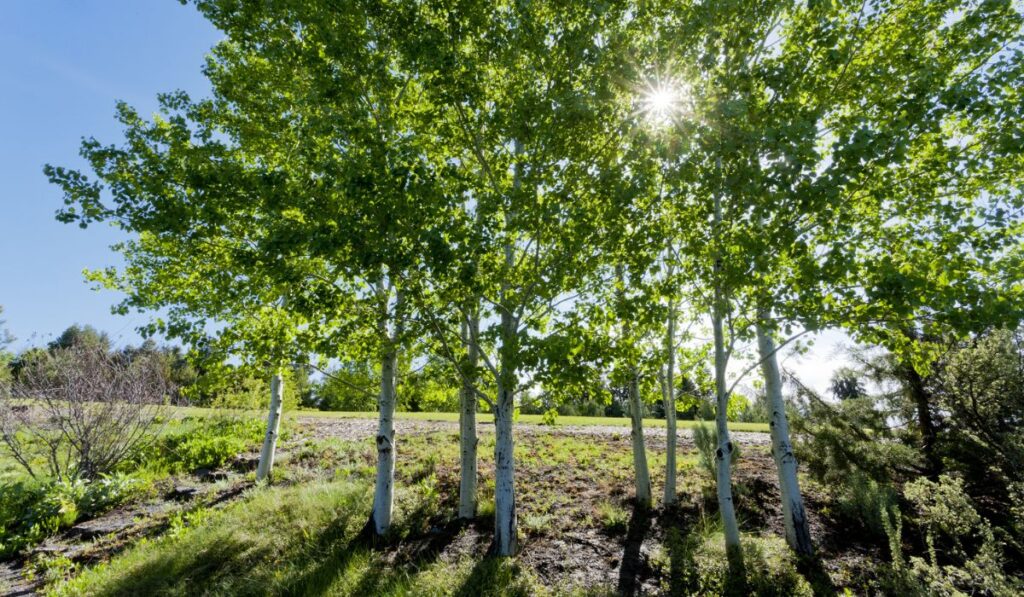Quaking aspen trees are an elegant and dazzling addition to your backyard with their distinct pale bark and “quaking” leaves. Planting young quaking aspen is easy and inexpensive — and caring for it is practically effortless. Here’s a quick guide on how to plant and care for quaking aspen.
To plant quaking aspen, prepare a 3-foot area in your garden, break the soil down to 15 inches, and add organic compost. Dig a hole, place the tree, fill the hole with the soil-compost mixture, and water it well. For proper care, ensure the plant gets sufficient sunlight, water, and fertilizer.
The quaking aspen is a hardy tree that grows very quickly, meaning your backyard will look stunning just a few seasons after planting it. Let’s get into the details, so that you can learn everything you need to know about the quaking aspen.
What Is Quaking Aspen?

The quaking aspen is a tree in the Willow family. Its name refers to how its leaves tremble at the faintest breeze. Other common names derived from its features include golden aspen (from its fall color), white aspen (from its bark color), and mountain aspen (from its favorite habitat).
You can easily identify the quaking aspen by its smooth, light-colored bark with darker knots and horizontal scars. Perhaps the most identifiable feature is its flattened leaf stalks, which make the leaves “quake” when the wind blows. The leaves are heart-shaped, range in size from 1.25-3 inches long, and their margins are finely saw-toothed.
The trees are medium in size with an average height of 30 feet (9 meters) and are generally grown in colonies. If the climatic and environmental conditions are favorable, the quaking aspen trees can grow up to 80 feet (24 meters) high.
Quaking aspens are eye-catching year round, but their true beauty unfolds in the autumn, when their leaves turn from light green to bright yellow.
Aspens are popular in hilly landscapes and regions with cold climates. They’re also found in several parts of the world, like North America, Africa, Asia, and Europe, with major cultivation in Canada and the US.
Are There Different Types of Quaking Aspen?
There are six different species of Aspens, depending on the region in which they’re planted. They include:
- Chinese Aspen is native to China and boasts a height of 30 meters. People use the Chinese Aspen tree wood for construction and furniture making.
- Korean Aspen reaches a height of 25 meters and has triangular-shaped leaves. It has a smooth greenish-gray to white bark with red or brown branches.
- Bigtooth Aspen mainly grows in North America’s eastern and central regions. Bigtooth Aspen has leaves with huge teeth, hence the name. It also has thin and olive-green colored bark, which differentiates it from other aspen trees.
- Japanese Aspen is a tall deciduous tree with abrasion-resistant wooly textured wood. It commonly grows in the hilly mountainous landscape of Japan.
- Eurasian Aspen has rounded leaves with curvy margins. It acts as fodder for wild animals such as elk, moose, and deer. It also serves as a shelter for birds like woodpeckers.
How to Plant Quaking Aspen
Planting and growing a quaking aspen tree at home is inexpensive and relatively easy. Here’s how to do it:
- Buy young aspen from a nearby nursery. Alternatively, you can use the root cuttings of a mature aspen tree for the sapling.
- Put the root cuttings in bags and wrap them in moist paper or compost, ensuring they don’t dry out.
- Select a spot in your garden that gets a lot of sunlight, then prepare a 3-foot area by getting rid of weeds and grass around it.
- Break up the soil down to 15 inches (38cm) in the cleaned area and add organic compost.
- Dig a hole in the worked soil and plant the sapling’s root ball. Fill in around it with the soil mixed with compost.
- As the tree matures, water it well for the entire growing season.
How to Care for Quaking Aspen

The quaking aspen is a high-maintenance plant due to its tendency to spread. To avoid growing unwanted trees, you must continually remove any new plants that pop up from the root system. Additionally, you’ll need to maintain the tree regularly by ensuring the following conditions are in order:
- Provide It With Enough Sunlight: Your aspen tree needs to be in an area with sufficient sunlight. Although it can tolerate shade, it requires full sun for the best results.
- Water It Frequently: Water the plants constantly to keep the soil evenly moist. Be sure to grow it in garden loam because it has good drainage.
- Maintain the Proper Temperature and Humidity: The quaking aspen doesn’t handle heat and humidity very well. Therefore, you’ll have to grow it in a cool region.
- Add Fertilizer to the Soil: The quaking aspen thrives best in moderately rich soil. Fertilize the soil with a complete fertilizer (on Amazon) in early spring for an extra boost. Follow the instructions on the fertilizer package to find out how much fertilizer you’ll need, as the amount varies with the tree size.
